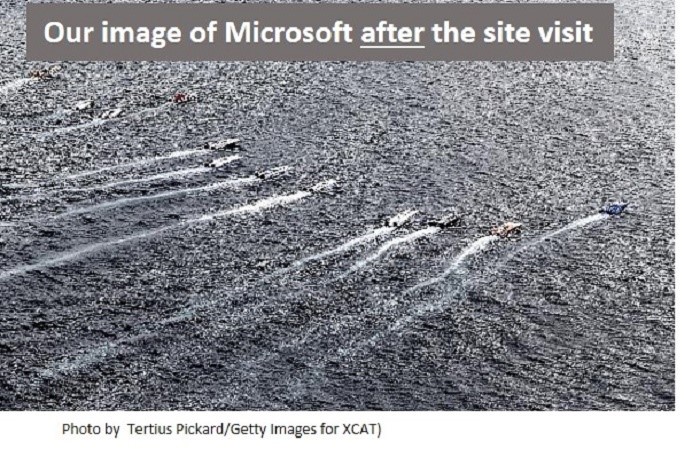“The world,” writes Alan Murray in Fortune, “is in the midst of a new industrial revolution.” The “frictionless corporation” of the 21st Century is “driven by technology that is connecting everyone and everything, everywhere and all the time.”
What then are the management practices of “the frictionless corporation” that enable “labor, information, and money move easily, cheaply, and almost instantly”?
Over the last year, a group of companies interested in finding out joined together to form a Learning Consortium for the Creative Economy, sponsored by Scrum Alliance, a membership association of more than 400,000 members with the mission of transforming the world of work.
Following nine site visits conducted during the summer and a retrospective review by the members, the group’s findings and recommendations are now available here and will be presented on November 6 at the Drucker Forum 2015. The session will be live-streamed (free registration here)
The most important finding of the Learning Consortium is that “changes in mindset are more important than changes in hardware or software.”
“Where the management practices and methodologies were implemented without the requisite mindset,” the Learning Consortium reports, “no benefits were observed.” When technology is deployed with traditional mindsets, the organization is not agile enough to exploit it. To succeed, management must draw on the full talents and capabilities of those doing the work.
The key message of the Learning Consortium, writes Andrew Hill of the Financial Times, is to “set staff free without plunging them into chaos.”
Enlightened managers, “in some traditional-looking companies are already shaking up their approach without drama… Basic changes include the switch from rigid five-year plans to adaptable rolling strategies; or the use of a military-style mission-command approach, where chiefs set a goal and allow frontline troops to work out how to reach it rather than dictating every step.”
The Learning Consortium, writes Hill, has “come up with several useful snapshots, after visiting each other’s operations to observe these new practices. They found, for instance, that self-managed teams were not just tiny curiosities. They could scale up to handle complex cross-border work. Ericsson — hardly a fresh-faced start-up at nearly 140 years old — has given autonomy to 2,300 engineers in 110 teams, co-ordinated from Athlone, Ireland, to produce enterprise software for huge telecoms operators.”
“Microsoft, latterly a byword for how bureaucracy can bury innovation, has made similar strides. At its development division in Seattle, 4,300 staff make applications for software developers, working in a way that would put Google to shame. Open workspaces are in and individual offices are out; so are top-down programmes that shackled everyone to a sluggish two-year release timetable.”
A detailed account of the Learning Consortium’s site visit to Microsoft is available in two articles here and here.
The site visits changed the members’ image of Microsoft, which was less like the giant battleship they had expected and more like “a flotilla of speedboats operating and maneuvering in an orchestrated fashion.”
“Although there were many variations observed during the site visits,” the report says, “the Learning Consortium observed a striking convergence towards a set of management goals, principles and values that are markedly different from the management practices of hierarchical bureaucracy that is still pervasive in large organizations today. Although there was no ‘one size fits all’, the site visits revealed a family resemblance among the goals, principles and values of the companies visited.”
The mindset includes:
- Goals, attitudes and values that focus on added value and innovation for customers and users, rather than a preoccupation with short-term profits.
- Managers seeing themselves, and acting, as enablers, rather than controllers, so as to draw on the full talents and capacities of knowledge workers.
- The use of autonomous teams and networks of teams, in some cases operating at large scale with complex and mission-critical tasks.
- The coordination of work through structured, iterative, customer-focused practices, rather than bureaucracy.
- Embodying on a daily basis the values of transparency and continuous improvement of products, services and work methods.
- Communications that are open and conversational, rather than top-down and hierarchical.
“Individually, none of the observed management practices are new,” the report says. “What is new is the way that the new management goals, practices and values constitute a coherent and integrated system, driven by and lubricated with a common leadership mindset.”
“The leadership principles that were observed in these site visits are not a random collection of fixes. They fit together as a mutually reinforcing set of management patterns. Once an organization or unit embraces the leadership mindset, and pursues it consistently over a period of time, it affects everything in the organization—the way it plans, the way it manages, the way people work. Everything is different. It changes the game fundamentally.”
“Another universal feature of the site visits to organizations where the goals, principles and values are being successfully pursued is strong leadership. This was not only true in organizations that were in transformation from an entrenched legacy culture of hierarchical bureaucracy, where courageous championing of the different goals, principles and values is a sine qua non of progress in overcoming an adherence to the status quo. It was also true in newer organizations that were founded from the outset with the goals, principles and values of the Creative Economy, where continuous championing and vigilance are seen as necessary to preserve the organizational culture, and to prevent reversion to hierarchical bureaucracy, especially as the organization grows.”
Members of the Learning Consortium will be on hand at the Drucker Forum session to share and discuss the Consortium’s findings including: Richard Sheridan, Chief Execuive Officer of Menlo Innovations, Ahmed Sidky: Director. Development Management at Riot Games, Paul Madden, Head of Product Development, in Ericsson Athlone, Ireland, Chad Lindblom, Chief Information Officer, CH Robinson International and Thomas Juli, Senior Manager HR Organizational Development of Magna International.
About the author:
 Steve Denning’s latest book is The Leader’s Guide to Radical Management. He is also the author of The Leader’s Guide to Storytelling, The Secret Language of Leadership, and a regular blog on Forbes.com.
Steve Denning’s latest book is The Leader’s Guide to Radical Management. He is also the author of The Leader’s Guide to Storytelling, The Secret Language of Leadership, and a regular blog on Forbes.com.



